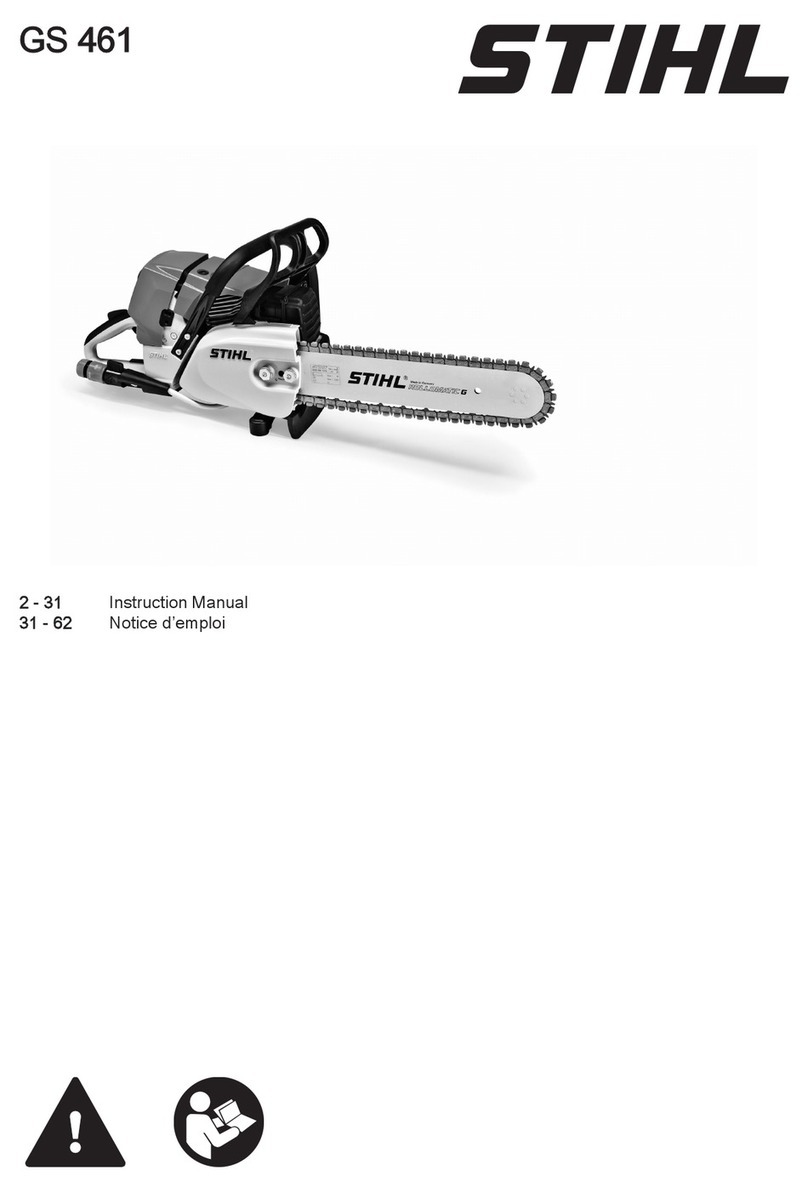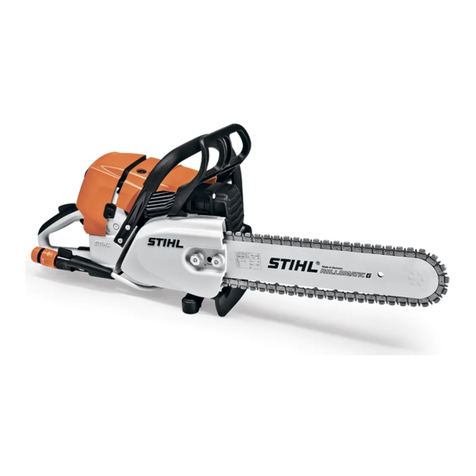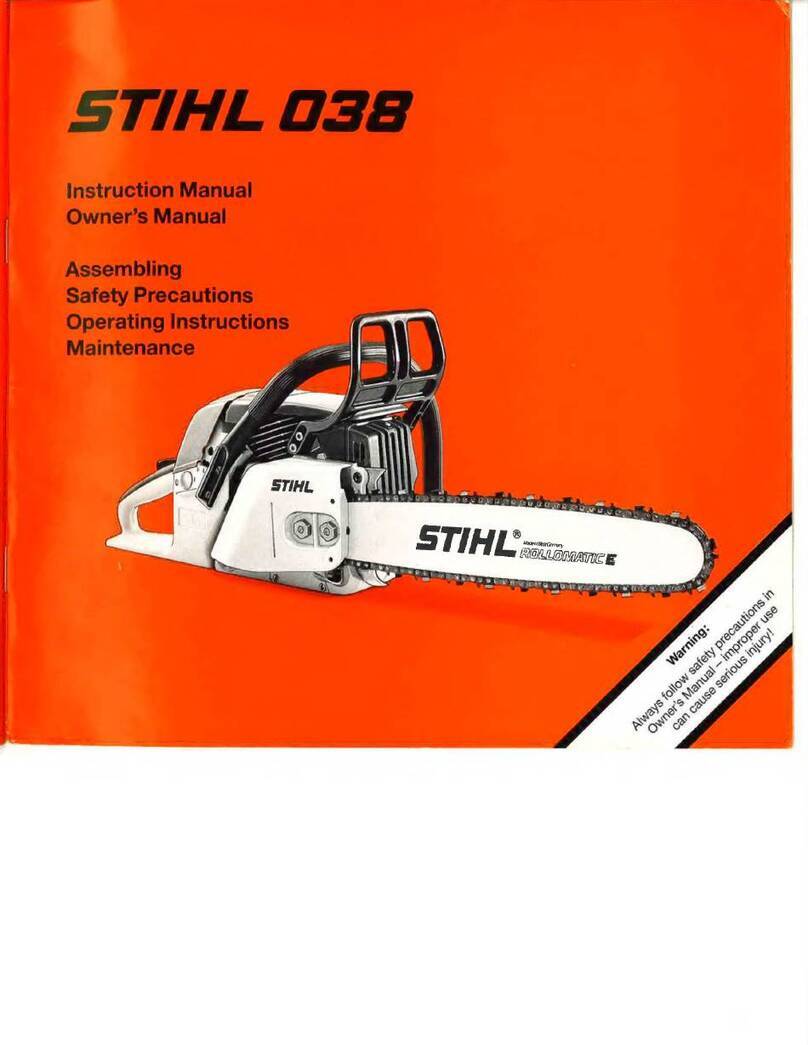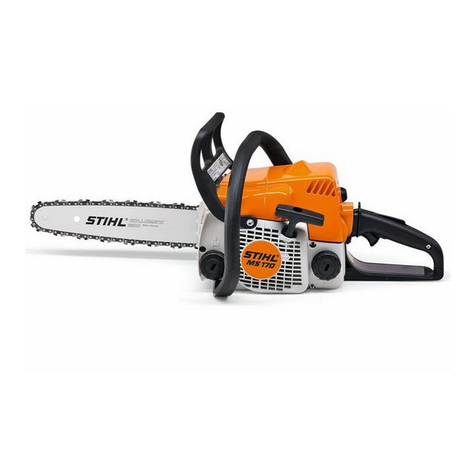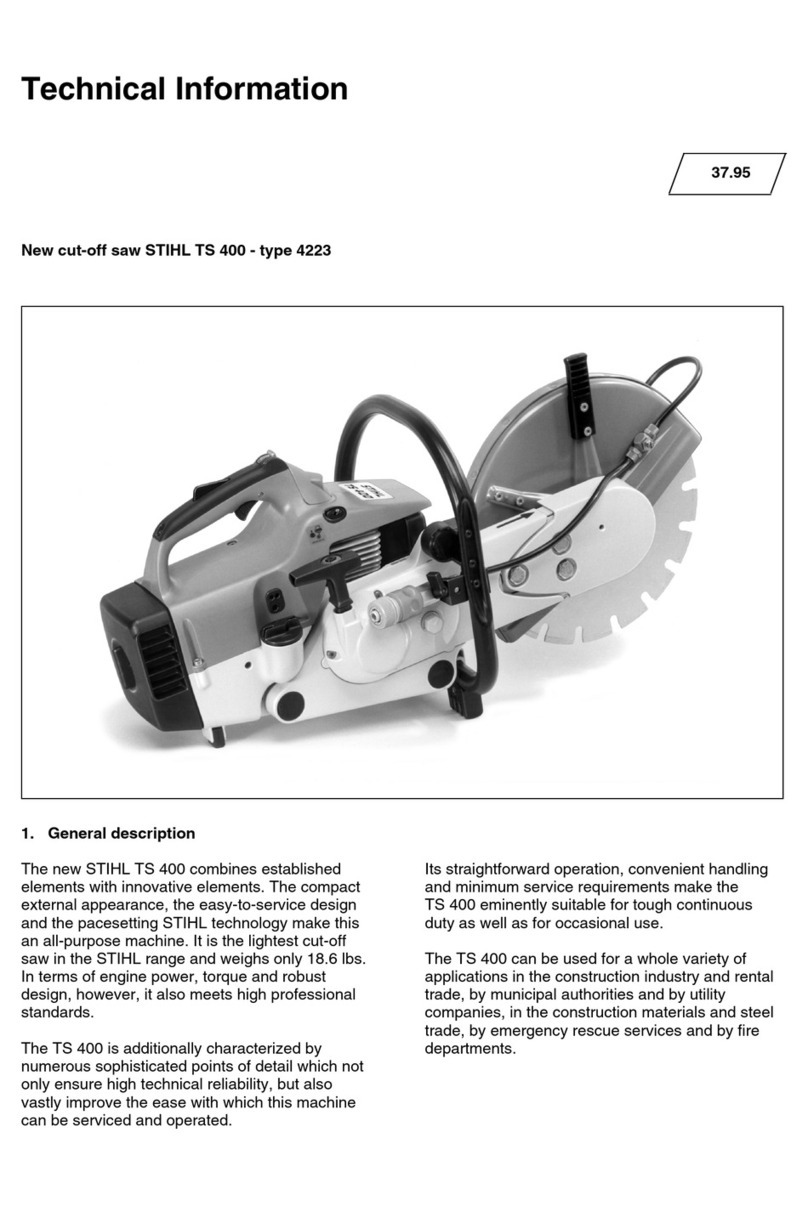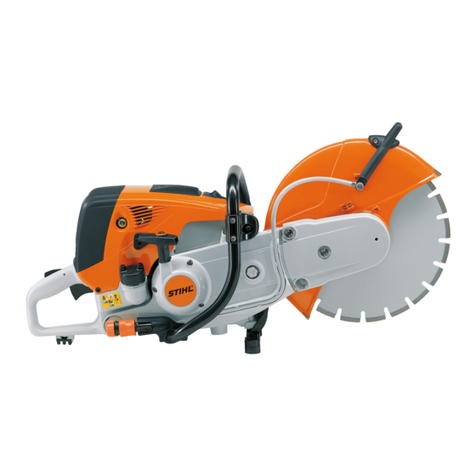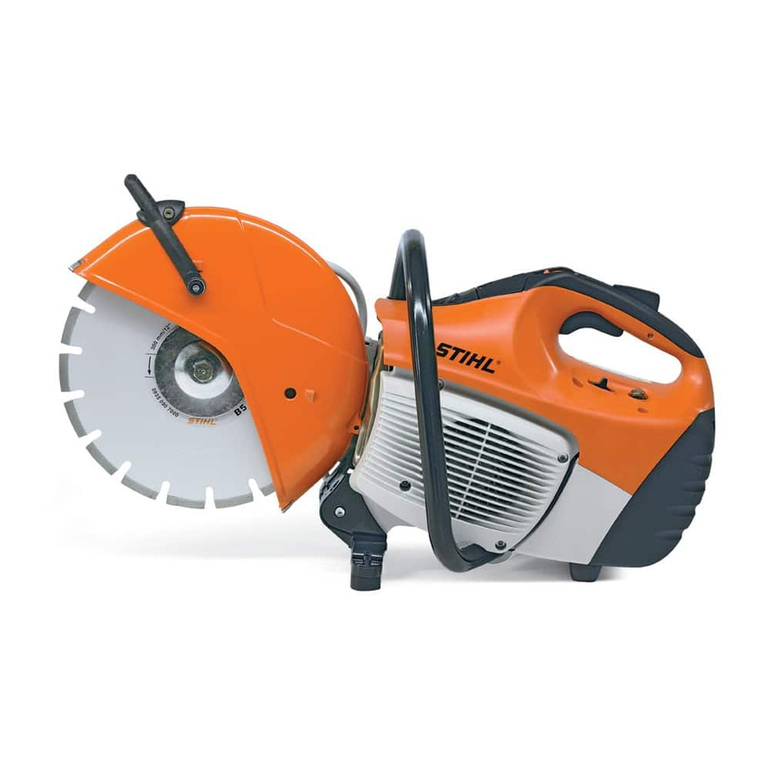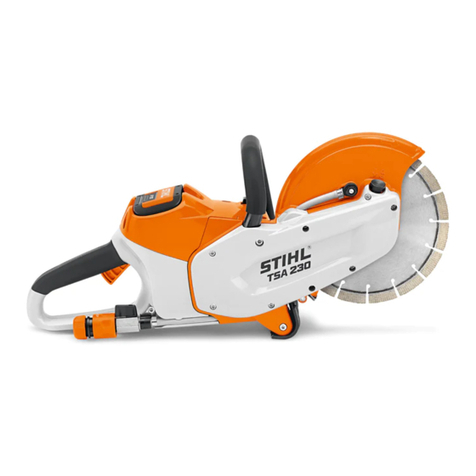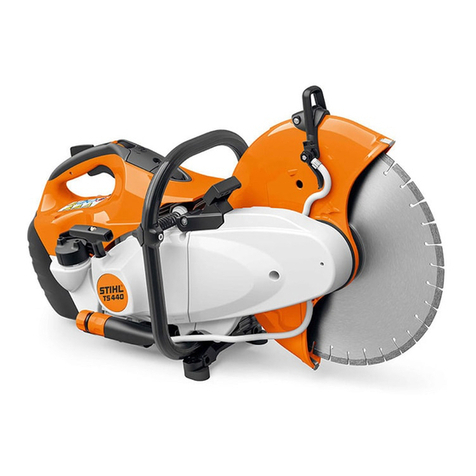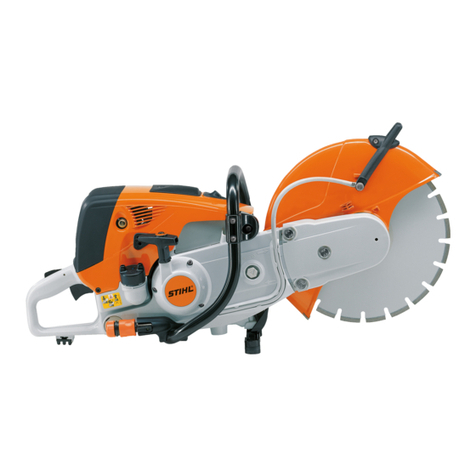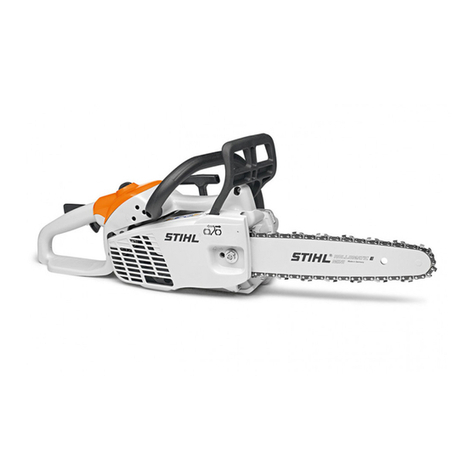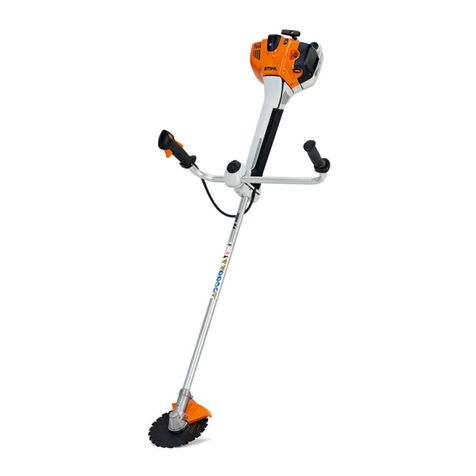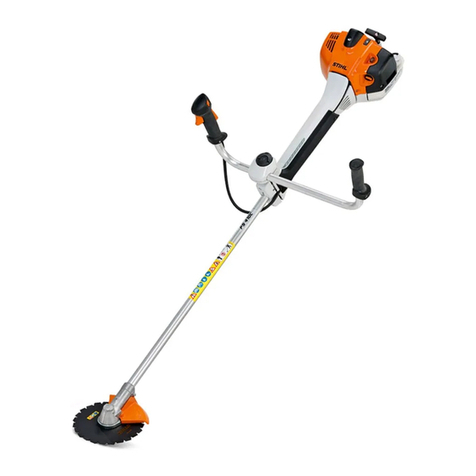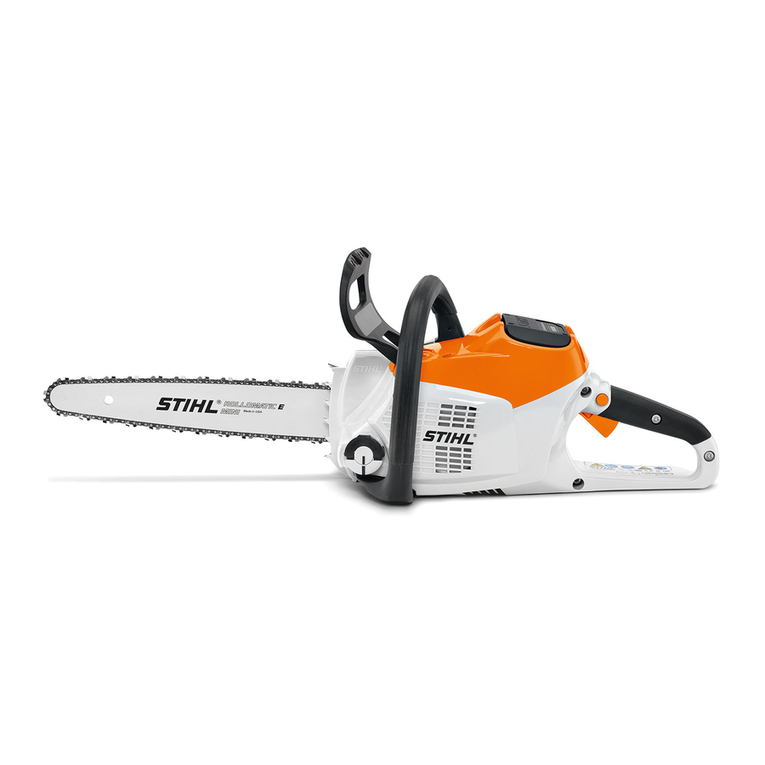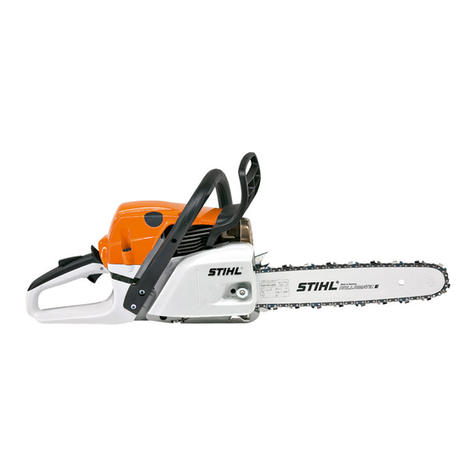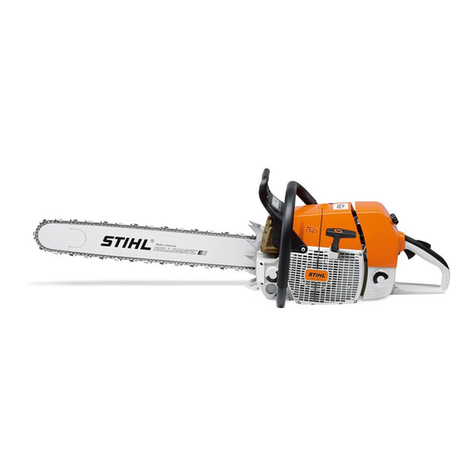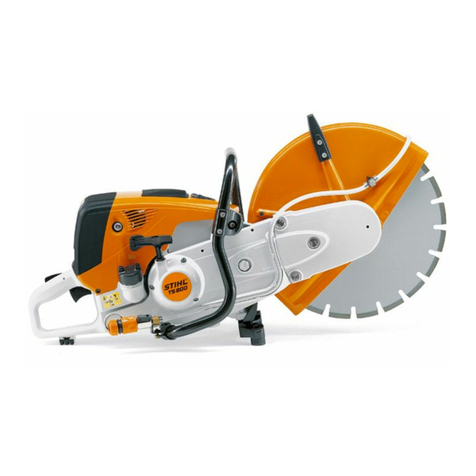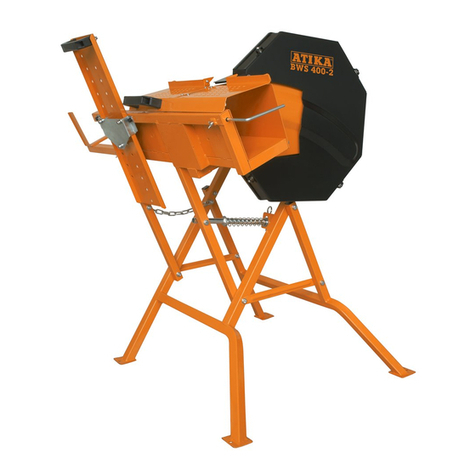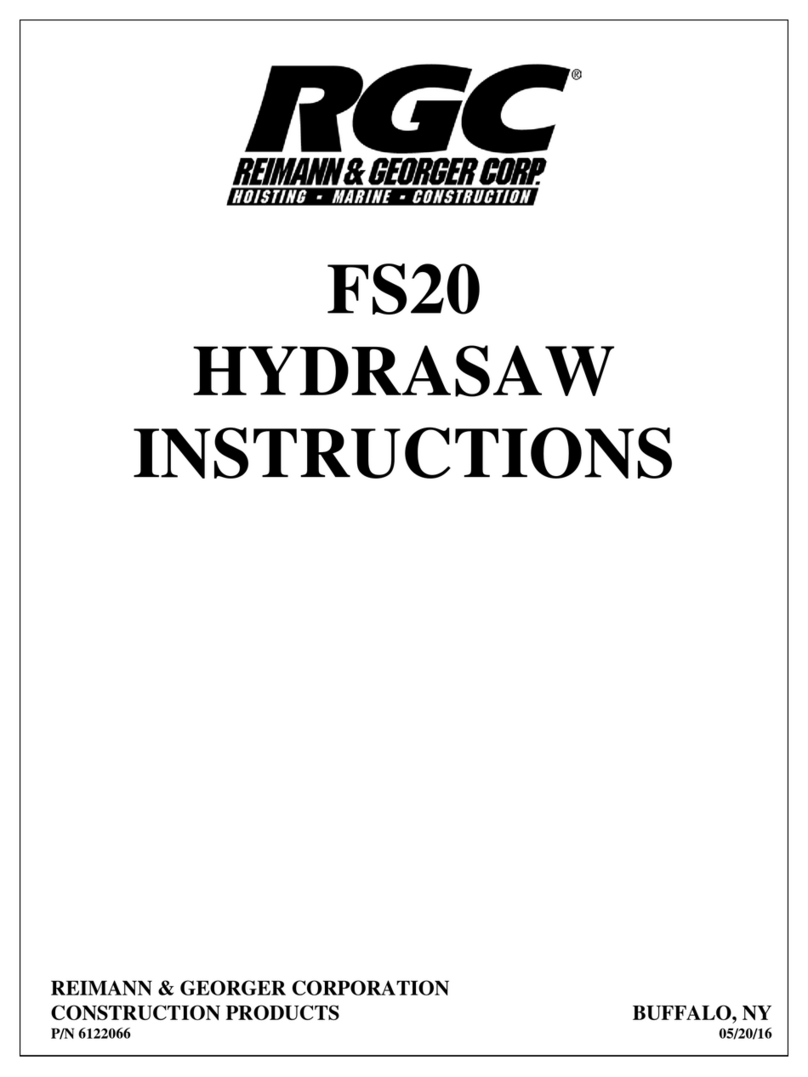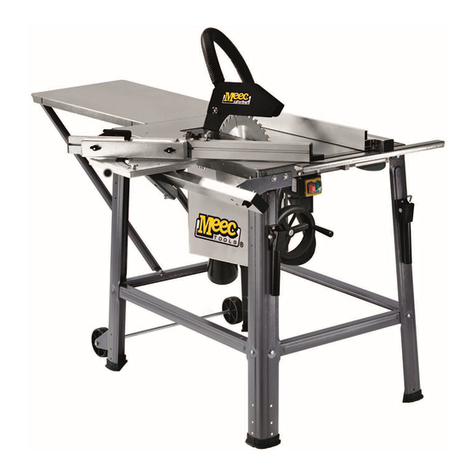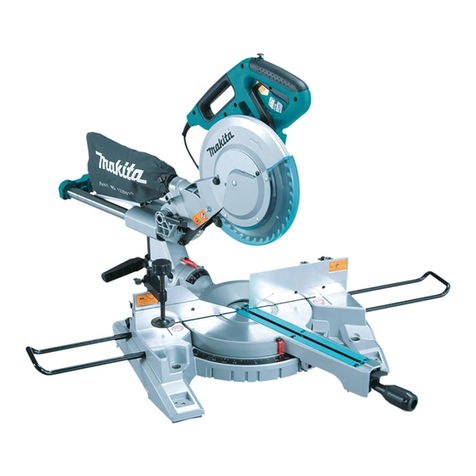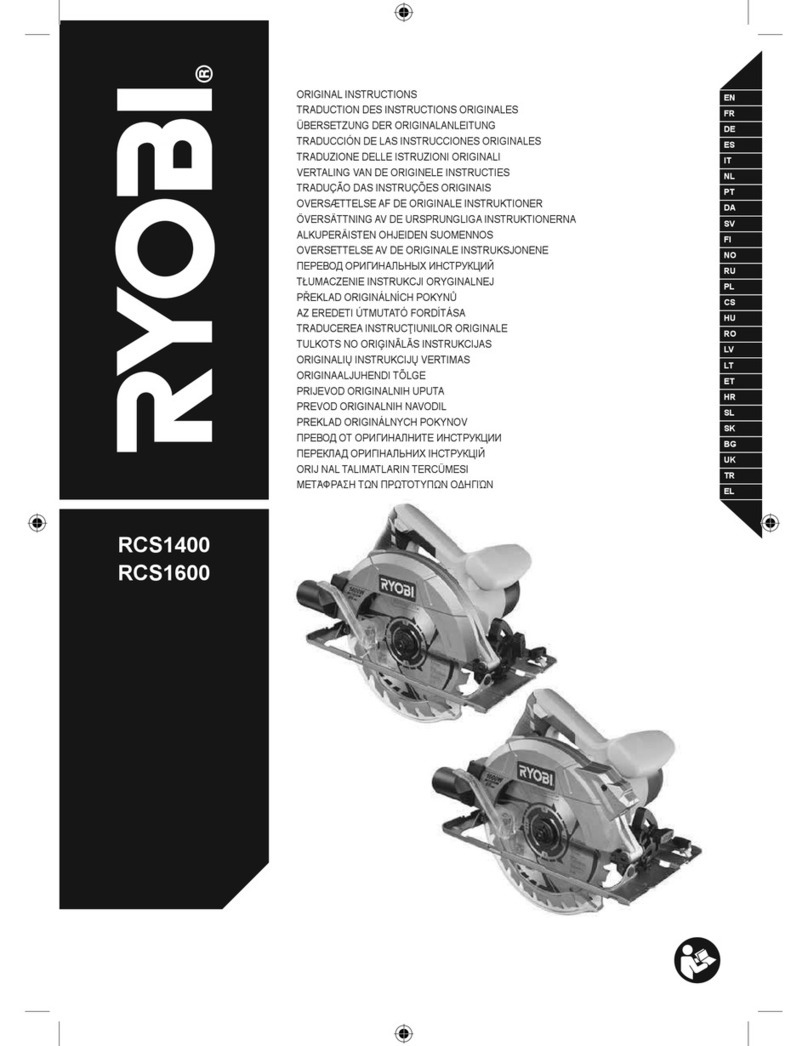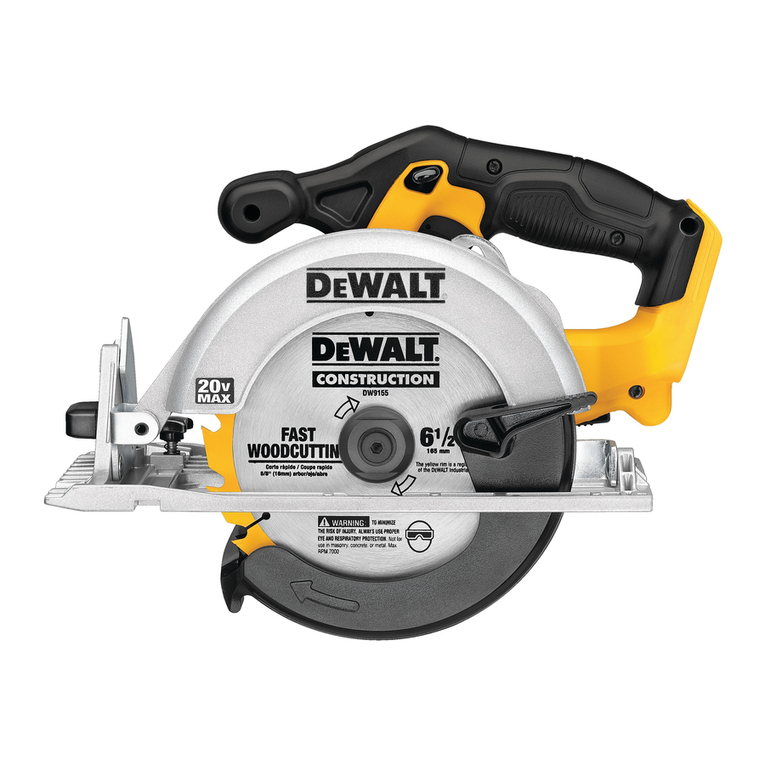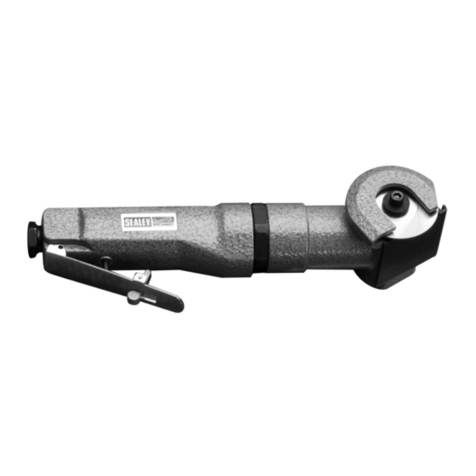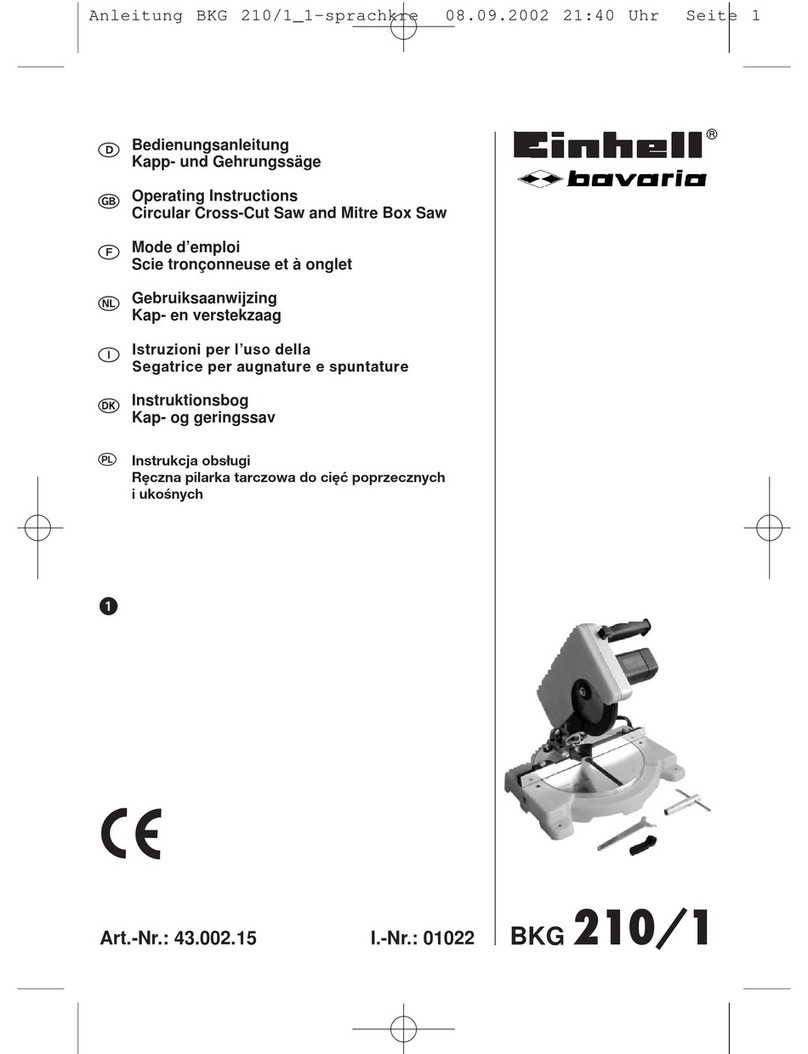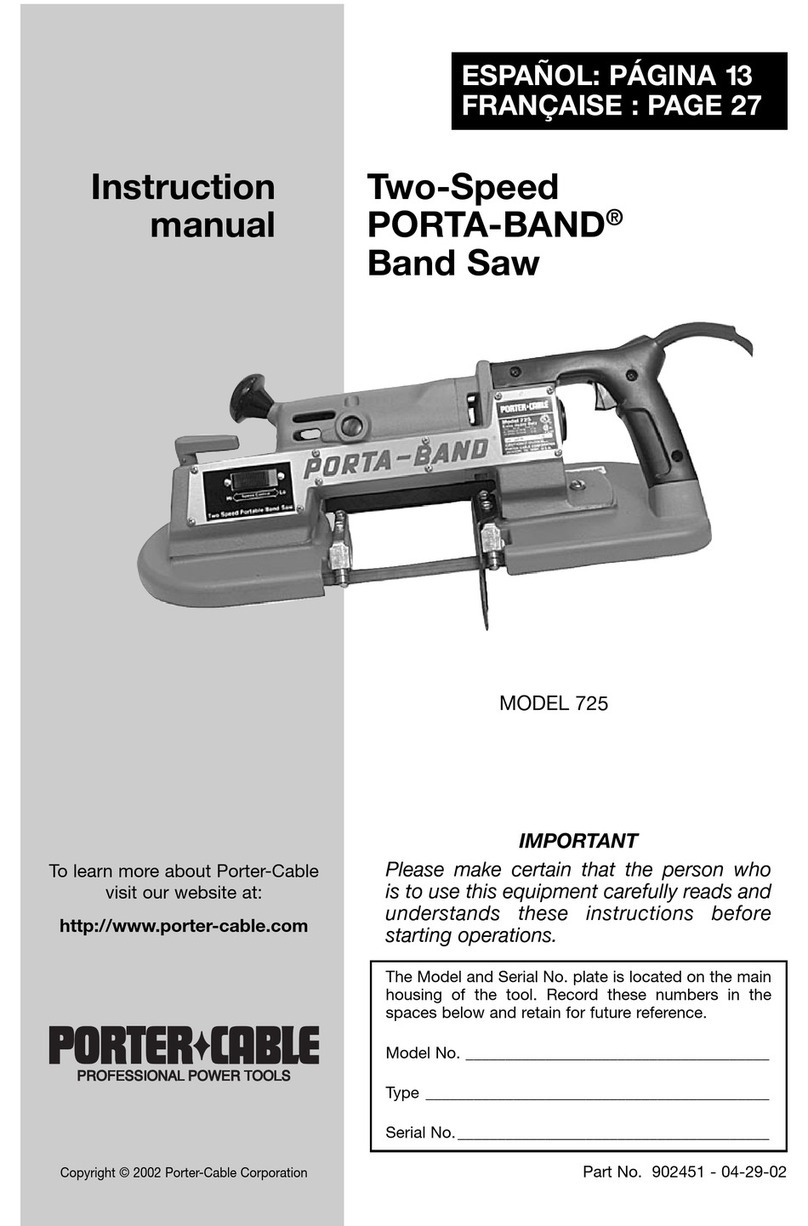
MS 170, MS 170 C, MS 180, MS 180 C
English
5
In the event of impending danger or in
an emergency, switch off the engine
immediately by moving the Master
Control lever / stop switch to STOP or 0.
Your power tool is designed to be
operated by one person only. Do not
allow other persons in the work area.
Never leave a running machine
unattended.
When the engine is running: Note that
the chain continues to rotate for a short
period after you let go of the throttle
trigger (flywheel effect).
Take special care in slippery conditions
– damp, snow, ice, on slopes, uneven
ground and freshly debarked logs.
Watch out for obstacles such as tree
stumps, roots and ditches which could
cause you to trip or stumble.
Do not work alone – keep within calling
distance of others in case help is
needed.
Be particularly alert and cautious when
wearing hearing protection because
your ability to hear warnings (shouts,
alarms, etc.) is restricted.
To reduce the risk of accidents, take a
break in good time to avoid tiredness or
exhaustion.
To reduce risk of fire, keep hot exhaust
gases and hot muffler away from easily
combustible materials (e.g. wood chips,
bark, dry grass, fuel). Mufflers with a
catalytic converter can become
particularly hot.
To reduce the risk of serious or fatal
injury from breathing toxic fumes,
ensure proper ventilation when working
in trenches, hollows or other confined
locations.
To reduce the risk of accidents, stop
work immediately in the event of
nausea, headache, visual disturbances
(e.g. reduced field of vision), problems
with hearing, dizziness, deterioration in
ability to concentrate. Apart from other
possibilities, these symptoms may be
caused by an excessively high
concentration of exhaust gases in the
work area.
The dusts (e.g. sawdust), vapor and
smoke produced during operation may
be dangerous to health. If dust levels are
very high, wear a suitable respirator.
Check the saw chain at regular short
intervals during operation or
immediately if there is a noticeable
change in cutting behavior:
–Shut off the engine and wait until the
chain comes to a complete stanstill.
–Check condition
–Check sharpness.
Do not touch the chain while the engine
is running. If the chain becomes jammed
by an obstruction, switch off the engine
immediately before attempting to
remove the obstruction.
To reduce the risk of injury, shut off
the engine before changing the saw
chain.
To reduce the risk of fire, do not
smoke while operating or standing near
your power tool. Note that combustible
fuel vapor may escape from the fuel
system.
If your power tool is subjected to
unusually high loads for which it was not
designed (e.g. heavy impact or a fall),
always check that it is in good condition
before continuing work – see also
"Before Starting". Check the fuel system
in particular for leaks and make sure the
safety devices are working properly. Do
not continue operating your power tool if
it is damaged. In case of doubt, have the
machine checked by your servicing
dealer.
Make sure the idle speed setting is
correct. The chain must not run when
the engine is idling with the throttle
trigger released. Check and correct the
idle speed setting at regular intervals. If
the saw chain still moves, have your
dealer check your machine and make
proper adjustments or repairs.
Reactive Forces
The most common reactive forces that
occur during cutting are: kickback,
pushback and pull-in.
Your power tool produces
toxic exhaust fumes as
soon as the engine is
running. These fumes
may be colorless and
odorless and contain
unburned hydrocarbons
and benzol. Never run
the engine indoors or in
poorly ventilated loca-
tions, even if your model
is equipped with a cata-
lytic converter.
